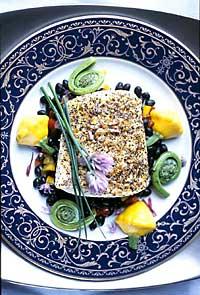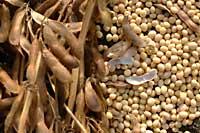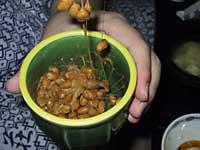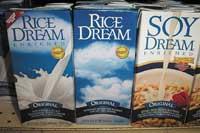Microorganisms in food: before, now and after
2003/08/10 Galarraga Aiestaran, Ana - Elhuyar Zientzia

For bread, yogurt and cheese, for example, the participation of yeast, bacteria and fungi is essential. And these are only a few; there are more than 3,500 modified or fermented foods in the world under microorganism control. In addition to food, fermented beverages are widespread; in the wine-making process, cider and beer are essential microorganisms as well as coffee, tea and cocoa.
In fact, the work of microorganisms allows to modify the characteristics of the raw material and create new textures, smells and flavors. In addition, derivatives are easier to digest than the original raw material and its nutritional content also varies, so they contain vitamins or other substances that did not contain the raw material. Microorganisms also allow different products to be obtained from a single raw material and fermented foods last longer. By reducing the need for cold storage or another method of conservation, the energy consumption needed for food conservation decreases.

Fermented foods, old thing
The use of microorganisms for food processing is not the invention of this morning. Between 10,000 and 5,000 years ago, that is, at the beginning of the Neolithic, the inhabitants of the Asian coast learned to use microorganisms for their own benefit. At the same time or shortly after, in other parts of the world began to use this technology, based on local raw materials. In this way, the flavors and smells characteristic of each society were created, which still today are associated with certain cultures of food and drink.
Until the existence of a refrigerator at home became normal, fermented foods were of great importance, as they allowed to have something to eat when fresh foods were not. Fermentation, of course, was not the only way to preserve food, but was used salting, smoking, drying, oil entry and others. However, fermentation had and has the advantage that, in addition to maintaining food for longer, it allows obtaining many derivatives from a single raw material. And that was much appreciated in those times when the raw materials available were always the same and relatively scarce.
XX. However, other forms of food conservation were invented in the 20th century, and especially thanks to refrigerators, food was allowed to remain longer without transformation. In addition, since then the market has been globalized and you can find food from anywhere in the world in the shelves of supermarkets. However, this has not meant much less the end of fermented foods.
Looking ahead

Nowadays people don't have time to prepare food or just prefer to spend that time on something else. On the other hand, the demand for healthy food has increased considerably. To respond to this, fermentation technology has changed: before the function of fermentation was to maintain food and create different flavors, and now fermentation technology is used to obtain food with special characteristics.
Works that show that some substances present in fermented foods have a beneficial effect on health have proliferated lately and producers have taken advantage to sell their products and create new products.
One of the clearest examples is dairy products obtained from lactic fermentation. In the West they consume a lot, not only because of their taste, but also because they are good for health. Similar products exist in the east, made from low-cost raw materials. For example, Korean Kimchi is made with vegetables, salted a little and fermented with lactic acid bacteria. These bacteria come alive and have a beneficial effect on the intestine. In addition, kimchi contains beneficial substances that do not contain vegetables. The same goes for some African foods derived from cereals such as bread and uji.

Now, uniting the wisdom and technologies of the west and east, new products such as soy yoghurts and rice are being created. Foods have also been invented to prevent or cure ulcers, which contain microorganisms that resist the bacteria that cause it. Others, for their part, help cure diarrhea and we all know those who lower cholesterol levels. That's what they say in the announcement.
However, it is clear that technology born 10,000 years ago will have a long life. May it be for the benefit of all and not just to enrich the food industry!
Published in 7k

Gai honi buruzko eduki gehiago
Elhuyarrek garatutako teknologia






